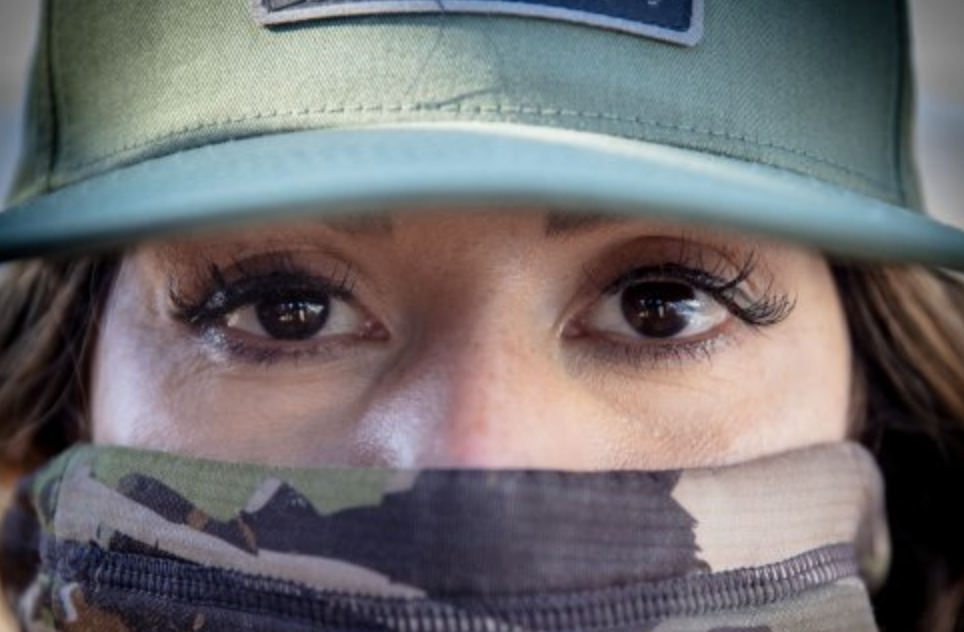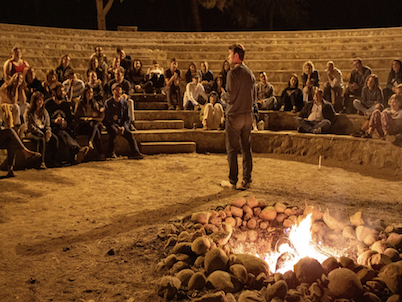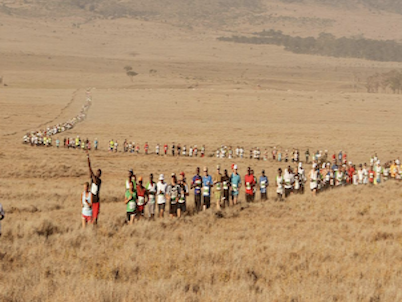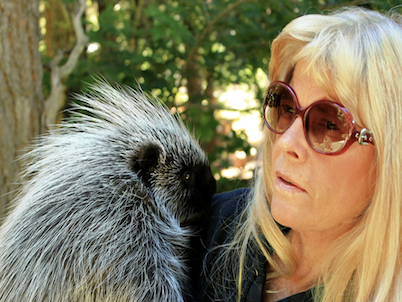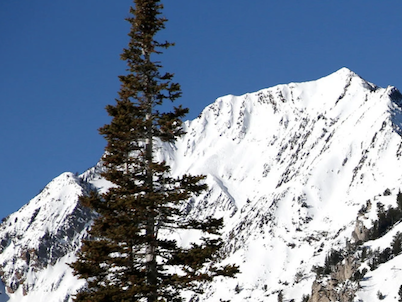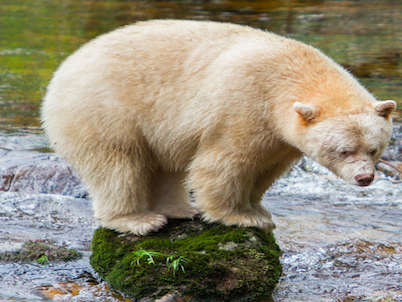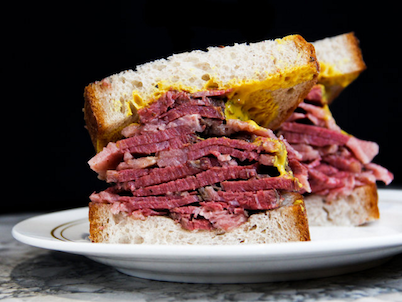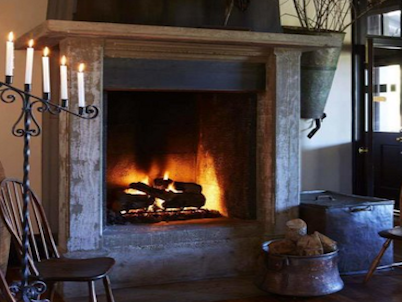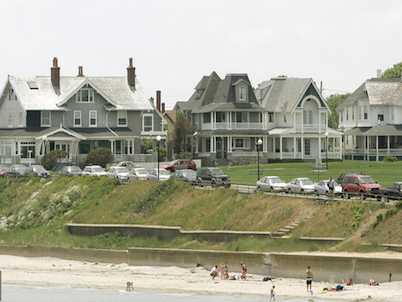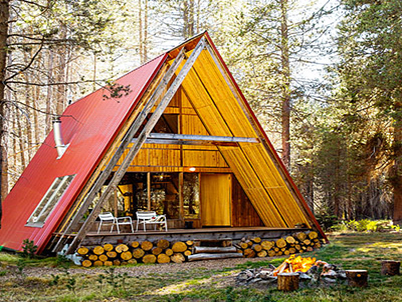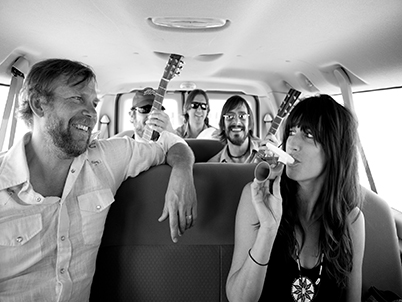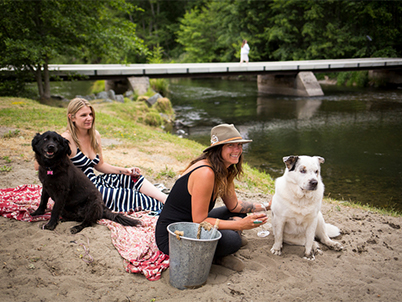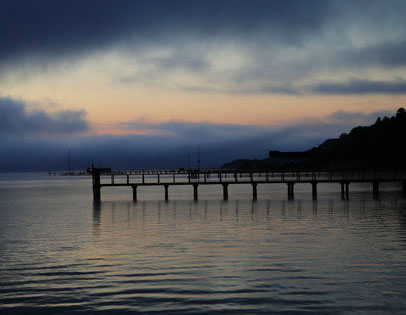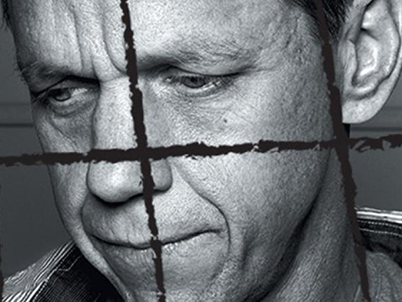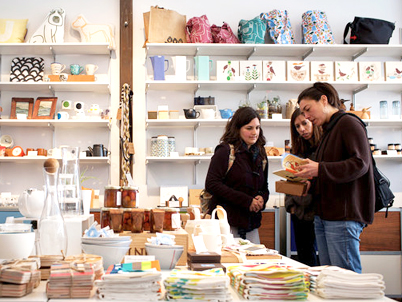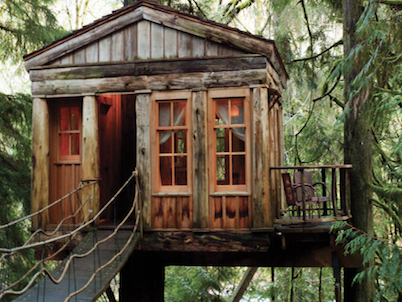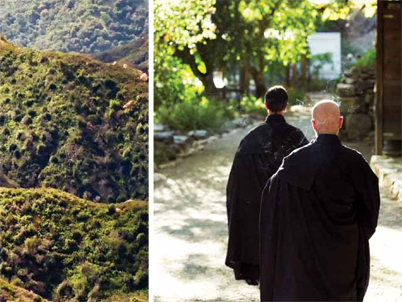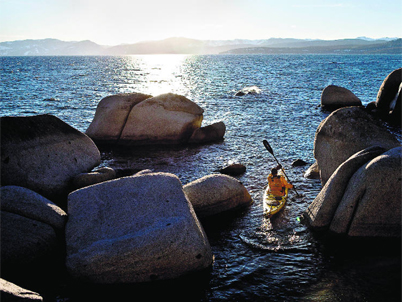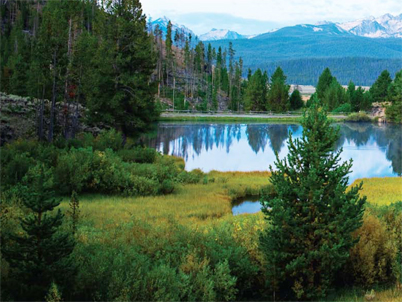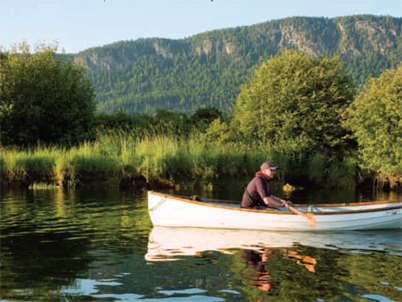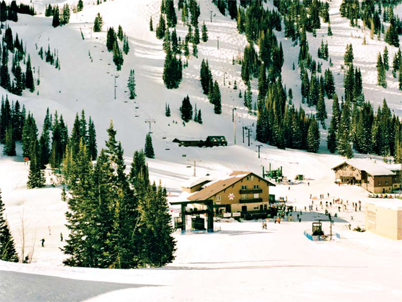It’s a dry January, which means two things on this girls’ trip to central Arizona: we’re all skipping the margaritas tonight, and the river will be low enough for our Tacoma to cross in the morning.
Crowded into a booth at a Mexican restaurant in a small town near the edge of Tonto National Forest, swapping names and where-are-you-froms, we are a motley crew: two millennials wearing camouflage and eyelash extensions, an overalls-clad photographer who lives in an Airstream, and me, a San Francisco food writer soon to be out of her comfort zone.
Our server, Penny, flower pen poised over her notepad, is confused. “I have to ask,” she says, inspecting us through rhinestone-studded spectacles. “What are you ladies doing here?”
Rihana Cary, 33, and Amanda Caldwell, 32, friends who met on Instagram, look at each other. They’re used to this question.
“We’re going hunting,” Amanda explains.
“What? Four ladies hunting? All by yourselves? Well,” says Penny. “This is rather interesting.” She wishes us luck.
Apparently, we’re going to need it. What we have, I learn, is a late-season, last-minute, over-the-counter, nonresident, archery-only antlered-deer tag on public land. We’ll be hunting mule deer: an animal that’s flighty and fast, with 310-degree vision, a sense of smell a thousand times stronger than ours, and ears twice the size of Alfred E. Neuman’s. The $300 tag will be difficult to fill—odds of success are just 10 percent. In other words, it will take serious luck to bag a buck in the next five days. But also serious skill, which these ladies definitely have.
Ladies they don’t mind. Just don’t call them huntresses. “We hate that word,” says Rihana, who lives in Layton, Utah, and works as a marketing director for Mtn Ops, a company that sells nutritional supplements and clothing for hunters. “It’s too sexualized, like temptress or seductress. Why does everyone try to put us in our own category? We’re hunters”—like hikers are hikers and runners are runners. Amanda, a realtor from rural Montana, agrees.
The style of bowhunting we’ll be doing, called spot and stalk—spotting an animal from afar, then stalking it until we’re within shooting range—is popular on the vast public lands open to hunters in the West, and it’s much harder than, say, deer hunting from a tree stand, which is more common in the East. “There will be lots of highs and lows,” Rihana warns. “But if we do get a deer, it’s going to be epic.”
I want epic. I think. As a liberal, urban, coastal-living walking cliché, I care where my food comes from: I’ll pay for the precious $4 peach, the $8 carton of local eggs, and whatever my bougie butcher counter charges for its organic grass-fed beef. But I have never cared quite enough to take it to the next level and harvest my own. That’s why I’m here, to fulfill my moral obligation as a meat eater. To experience what it feels like to, if not kill the animal myself, at least watch it die. And then, you know, help dismember it before sitting down to dinner.
Modern-day omnivores have long outsourced the dirty work, of course. And in doing so, we’ve created something even dirtier: factory farms and slaughterhouses. Things most meat eaters like to ignore for the ease and inoffensiveness of picking up a pound of plastic-wrapped chicken breasts on the way home from work.
“Ohhh, he’s so killable!” whispers Amanda, her long blond locks free-flowing around her moon-shaped face.
In 2004, David Foster Wallace wrote in Gourmet about lobster, though the same holds true for steak: “As far as I can tell, my own main way of dealing with this conflict has been to avoid thinking about the whole unpleasant thing. I should add that it appears to me unlikely that many readers of Gourmet wish to think hard about it.”
But today, food has come to dominate our collective conversation. “Who makes the best ramen?” is the new “It looks like rain,” and photos of Early Girl tomatoes get nearly as many likes on Instagram as photos of cute kids. At the same time, we’re increasingly concerned about the environment and climate change—according to the Food and Agriculture Organization of the United Nations, livestock contributes 14.5 percent of the world’s human-caused greenhouse-gas emissions. The result is our fervent desire to know the source of everything we eat, from our honey to our halibut. Consumer interest in sustainable food increased 23 percent from 2018 to 2019, according to a recent study by Tastewise, a data platform for the food industry. Harvesting your own meat is a way to opt out of the distasteful aspects of factory farming.
The global COVID-19 pandemic has only heightened our interest in self-sufficiency, from gardening to raising backyard chickens to hunting. While people panic about meat shortages, having the ability to secure your own supper is an attractive idea.
Hunting in America has long been associated with gun culture, something for dudes who love to drive big rigs and drink beer and shoot things. But shouldn’t it also be associated with food culture, something for women like me—or, really, anyone—who love to hike and drink wine and eat things?

We leave our Airbnb and roll into the desert before first light. Everyone but me is dressed in top-of-the-line camo. Rihana wears Under Armour, which has sponsored her as an athlete since 2015. (The company started making women’s hunting apparel in 2011.) Amanda has on more than $700 worth of Sitka gear in Gore Optifade. I’m rocking a pair of baggy REI zip-offs circa 2006, which I pulled from the depths of my dresser because they were khaki, and a puffy jacket, which is lime green. (I know. It’s all I had.)
Clouds stutter across the sky as it glows gold. A thin frost coats the hard, reddish ground, crunching beneath our boots. Snow-dusted mountains rise in the distance. Rihana and Amanda, whose hair and makeup look better at dawn in the desert than mine would at a black-tie dinner, break out binoculars. They begin to glass a hillside across a broad, flat valley. Birds chirp. Coyotes take roll call. Otherwise it’s still and quiet, as it should be when you’re scanning for animals that have hyperacute hearing. Then I slam the truck door. Rule number one: “No slamming doors,” whispers Jen Judge, 48, the photographer for this story. Jen bowhunts, too. But without a tag, all she can do on this trip is glass. She’s goddamn good at it.about:blank
“I got deer,” says Jen, not long after sunrise, describing the animal’s location in the beige and sage landscape like she’s giving directions to a lost spa-goer in Scottsdale. “Left of the outcrop, left of the saguaro, in the drainage, in front of that tree.” Which tree? Rihana and Amanda sync up within seconds. Bouncing my binoculars around, I just make myself dizzy.
Doe. It’s the rut—mating season—which means odds are there’s a horny, aggro, testosterone-fueled male on the doe’s heels. Through the spotting scope, Rihana confirms: buck. Bedded under the bush, about 1,200 yards away, the four points on each of his antlers blending seamlessly into the branches. How the hell did they see him?
“Ohhh, he’s so killable!” whispers Amanda, her long blond locks free-flowing around her moon-shaped face. (No hair tie for this hunter.) He’s napping below the chapparal-shrouded ridge, 40 yards from the top, which means Rihana can hike the long way around and over and be within range when he wakes and stands. She’s never gotten a mule deer with her bow before. “I’m so excited for you!” says Amanda. She and Rihana clasp hands and squeal like tweenagers before a Beyoncé concert.
Rihana plots the buck’s approximate coordinates using OnX Hunt, an app with topo and aerial data that allows stalking hunters to mark and share an animal’s location. She sprays what looks like a Visine bottle, testing the wind. If it’s blowing the wrong way, he’ll catch her scent. The breeze is good. The hunters clink slabs of homemade elk jerky. Rihana readies her bow, tosses her dark, auburn-streaked braid over her shoulder Katniss Everdeen style, and sets out. But not before putting her leopard-print-cased phone into selfie mode, turning the camera on herself, and pressing record for her 65,000 followers.
Rihana and Amanda are part of a growing scene of what I’ll call huntstagrammers, social-media influencers who are quite literally changing the face of hunting. Sure, men like Cameron Hanes and Sam Soholt have helped make hunting look hipper and more handsome on Instagram, too. But it’s their female counterparts who are shifting perceptions, with feeds that are also filled with rifles and camo, bloody fist bumps and butchered backstraps.
According to some industry groups, women are a fast-growing demographic of hunters in the U.S., during a time when overall participation has declined. Four percent of Americans hunt, the lowest share in three decades, says a Fish and Wildlife Service survey. But according to the National Shooting Sports Foundation, female participation increased 59 percent from 2010 to 2019, while male participation dropped 4 percent. (Stats from the Fish and Wildlife Service, which uses a different data set, conflict with these numbers, and indicate a slight decline in female hunters.) Today the NSSF says women make up 22 percent of all hunters, compared with 12 percent in 2003. Artemis, a group of sportswomen-conservationists founded in 2017, already has some 11,000 community members, the majority of whom are between the ages of 25 and 45.
Women have always hunted, of course. Research suggests that Neanderthal women helped men hunt big game. In the early 20th century there was Nellie Neal Lawing, known as Alaska Nellie, who left Missouri (and her first marriage) in her forties to open a roadhouse along the Alaska Railroad and became a famed trophy hunter. In regions where it’s part of the culture, generations of women have long hunted, often with men, though all-women groups are not unheard of. (The Swamp Witches, a crew in Mississippi, have been duck hunting together for two decades.) Amanda’s mom hunted, too, and so did her grandmother. None of these women had social media, however, or the impulse it breeds to broadcast their skills, and kills.
Today, women hunters are more visible than ever. “It’s exploded,” says Curt Wells, editor of Bowhunter magazine. He says social media has played a major role. Before it, he explains, when women did show up in traditional hunting media like TV shows, they were often portrayed as sidekicks or cohosts. (Wells cites examples like Ralph and Vicki Cianciarulo, “America’s favorite hunting couple” on the Outdoor Channel, and Lee and Tiffany Lakosky of the show Gettin’ Close, on the same network.) Now a new school of young women are becoming stars in their own right, using the Hefe photo filter and hashtags like #girlshunttoo and #womenwhohunt to garner huge followings. Thirty-two-year-old Eva Shockey, for example, is arguably the queen of huntstagram, with more than two million followers across platforms and her own television series, My Outdoor Family. (Shockey also cohosts a hunting show with her father, celebrity hunter Jim Shockey.)
“I had such a heavy heart. So much adrenaline. I was crying,” Rihana says. “Taking a life is always emotional. Once it’s not, you should probably stop hunting.”
Hunting brands are embracing the trend. Following Under Armour, Idaho-based apparel company First Lite launched technical women’s gear in 2015. And legacy brand Orvis, which makes upland (hunting for certain bird species) apparel for women, began expanding its options around the same time. Between 2016 and 2019, Orvis’s women’s upland-hunting business grew 210 percent.
Prior to that, pickings for women were slim—and what existed was often too big, bulky, and unbreathable, or made with cheap materials. “We used to have to wear men’s stuff,” Amanda recalls. “Remember when they came out with pink camo?” She and Rihana scoff.
“Kind of defeats the purpose,” Rihana says.
In the mid-nineties, companies began making women’s compound bows. Like the men’s versions, these high-tech bows use a levering system of cables and pulleys, thus requiring less strength to draw and hold than the longbows you might recall from summer camp. Women’s compound bows are smaller and lighter, with typical draw weights of 40 to 50 pounds, compared with 60 to 70 for men’s versions. Women’s participation in bowhunting increased by 260 percent between 2003 and 2017, according to the NSSF.
“Companies are realizing women are a way to make money,” says Elizabeth Covelli Metcalf, an associate professor and social scientist at the University of Montana who studies hunting. “They’re designing gear and investing in influencers and social media, and it’s spreading awareness.” In 2018, Metcalf started coteaching a course called Hunting for Sustainability; the majority of students who signed up were women.
Society is used to the image of the burly dude posing with his trophy kill. What challenges expectations more: millennial women like Rihana and Amanda, done up like Dallas Cowboys cheerleaders, boasting draw weights of 60-plus pounds, elbows-deep in elk guts.
As Rihana treks toward the buck, Amanda assembles her Phone Skope in hopes of recording the kill. An adapter that allows her to use her smartphone to magnify the view through her spotting scope, it’s much better than my nausea-inducing binoculars.
An hour later, I see Rihana peeking over the ridgeline, then creeping downhill, each step as intentional as a dancer’s. Hunkered behind a bush, she’s 88 yards from the deer. She needs to get within 60 to shoot. Popping almonds like popcorn, I feel like I’m watching a silent thriller. I thought hunting was supposed to be hard. We’re only three hours into day one and Rihana’s already poised to shoot a stately looking senior? Too easy.
Doe up! She senses something. Now the buck is standing. He’s chomping a bush. Amanda makes a bleating fawn sound to distract the animals, allowing Rihana to inch closer. Rihana is at one with the hillside, as much as the deer and the dead ocotillo shrubs are. It’s primordial. The hunter and the hunted, in one real-life frame. I’m breathless. And then, just as she’s about to draw, for some reason the buck busts.
Smart guy. Inside, I cheer.
Rewatching the grainy clip later, we’ll realize that it wasn’t Rihana who spooked the deer. It was a bobcat, leaping off the top of a saguaro in the same frame. Holy fucking nature: bobcat saves buck’s life.
“That could be it,” says Amanda over Oscar Mayer honey smoked turkey wraps at lunch. “We could go the rest of the week without seeing another buck.”
But that afternoon, we—well, they—spy three more, including a big guy going nuts for a doe, who is not in the mood. “How are we gonna kill him?” schemes Amanda. It’s her turn to stalk. Two hours later, she texts. The wind was bad. Buck’s gone. So Rihana and I traipse up the ridge to try to find him. A needle in a haystack has got nothing on a deer in 2.9 million acres of national forest.
By the time we get back to the truck an hour or two later it’s dark and raining, and I’m pulling cactus needles from my calves. On the drive out, I wonder why anyone bothers hunting when there’s Uber Eats. Can’t we just get burgers?
Rihana hasn’t had a greasy beef patty in years. She lost her taste for fatty cow meat, she says. She eats wild game now, mostly elk. Her six-foot-long freezer at home is full of it—some 300 pounds of meat that she harvests annually, everywhere from Utah to North Carolina to New Zealand.
That’s quite a feat for a former vegan who grew up in Ashland, Oregon, where the only thing her family hunted was mushrooms. In college, Rihana worked at a Macy’s makeup counter and ate McDonald’s. After graduation she enrolled in nursing school, where she researched a paper on factory farming and was appalled at the animals’ squalid living conditions, how they were pumped with antibiotics. She couldn’t afford organic meat, so she gave it up altogether for a while. Then she met a guy. (It’s always a guy.) He brought her on hunts. She loved the sounds of the forest, the way her senses heightened, the reverence she felt for the animals, and the fact that from life to death to dinner, she controlled every aspect of the meat she ate.
The guy gave her a ring. But her 23rd birthday brought the better gift, the one she kept: a bow.
“I used to think hunting was horrible!” says Rihana, who now, nine years later, spends some 200 days a year in the field for her work with Mtn Ops or just hunting with girlfriends. (Her new boyfriend doesn’t bowhunt, and Amanda’s boyfriend doesn’t hunt at all. But they both plan to teach their men.) Before killing her first animal, a black-tailed deer, Rihana remembers looking at it and thinking, Can I really do this? She pointed her rifle and closed her eyes. “You don’t close your eyes!” she laughs, recalling the moment now. She missed. “On purpose, I think,” she says. Then she got a rare second chance—and dropped the deer. “I had such a heavy heart. So much adrenaline. I was crying,” she says. “Taking a life is always emotional. Once it’s not, you should probably stop hunting.”
Rihana learned to shoot both a rifle and a bow in the same summer, but it would take several more months of archery practice before she felt strong and proficient enough to shoot an arrow in the field. Thirty-eight percent of gun owners cite hunting as one of their primary reasons for owning a gun. Contrary to what many may think, not all hunters are members of the NRA. Jen says that in her small circle of hunter friends, not one is. Amanda is an NRA member; Rihana’s membership lapsed. Both women still rifle-hunt and carry for protection. But they prefer bowhunting. To them, it’s the epitome of fair chase, an ethical approach to hunting that emphasizes honorable pursuit of an animal.
The difference is ultimately a philosophical one: with a rifle the hunter arguably has the advantage; with a bow the prey does. An experienced rifle hunter need only get within several hundred yards of an animal, whereas on this hunt, Rihana and Amanda must slip within 60.
While learning to outsmart an animal, to stalk close enough to shoot, Rihana says she developed the patience and persistence and confidence she’d lacked in her aimless teens and early twenties, when partying was her priority. She felt like she’d unleashed a natural ability. “I’m 25 percent Native American,” she says. Her grandparents were Juaneño and Cahuilla, tribes that historically bowhunted. “I feel like it’s part of me.” 
Hunting is in Amanda’s blood, too. “I was born in a camo onesie,” she jokes. Hunting has always been her primary means to a meal. Finances were tight in her family, so once she was 12, old enough for a tag in Montana, her father took her out. “At dinner my mom would say, ‘This is your buck, Amanda.’”
In the fall of 2018, after her mother passed away, Amanda spent three weeks alone in the Montana wilderness (she won’t say where—hunters never reveal their spots) before shooting her biggest elk yet: a mature Rocky Mountain six-point she stalked for six hours with her bow, coming within five yards of the bull. She harvested a year’s worth of meat.
Processing and packing out an animal is not for the squeamish. Amanda uses the gutless method, which requires slicing open an animal head to tail down its backbone. She peels off the hide, pulls out the backstraps, then the front shoulders, then the hind quarters, and debones. She hangs whatever meat doesn’t fit in her pack or on her horse and returns for the rest, sometimes multiple times. She once carried 95 pounds on her back over six miles and crushed a vertebrae. It took her two months to recover.
“Telling a woman not to wear makeup in the field is like telling a guy not to fart in the field!” Rihana says. “Why would I change who I am when I go hunting?”
Amanda posted a photo of that six-point bull to her Instagram feed, and it remains her most liked post to date. “You were completely solo?!?” commented @mountain_momma_1102, with a mind blown emoji. But not all female huntstagrammers are willing to post photos of fresh carcasses. Some stick to selfies in cute orange hats or bowls of venison bulgogi. Rihana doesn’t shy away from gore. “I’m not afraid to show blood,” she says. “I’m not afraid to show the reality of it.”
No matter what #womenhunters post, they receive the same thing male hunters do: hate mail. But more of it, some say. “I’ll get stuff like ‘I hope your family dies,’” Rihana says. “I’ve probably blocked 1,000 people, including friends from high school who wrote that they don’t understand who I’ve become.” She and Amanda also get asked out at least once a day. “Can I take you hunting?” is a recurring DM. Both say their followers are 75 to 80 percent male.
Ultimately, though, the “You’re an inspiration!” messages far outnumber the nasty comments. Rihana and Amanda are on social media to share their love of hunting, they say. To show women they can do it, too.
Day three, and we’ve rented a UTV. It’s a full moon, which supposedly keeps deer up all night and bedded down all day. Still, Jen spots a buck, hot on six does, within minutes of adjusting her binocs. Later, Rihana superheroically spies another from 1,200 yards away.
After two long, ultimately failed stalks, we meet Rhonda, a sweet, gangly fifty-something mom from Flagstaff wearing camouflage. She’s with her husband and son, and the three of them are also bowhunting for mule deer.
“I saw you two earlier!” she says to Rihana and Jen. She looks at me and Amanda. “And then I saw two more! I never see women hunting together,” she says with a mix of awe and envy.
I want to tell her I don’t really count. But then I realize, hey—I’ve been out here 12 hours a day, and now I’m wearing borrowed camo and cooler khaki pants and even picking out puffy white butts hidden in the brush, so maybe I do?
In the afternoon, we gorge on Sour Patch Kids and go after a bedded dude with two does who eventually busts. As the sun dips behind the mountain, Jen again has deer. A buck, two ridges over. It’s 30 minutes until dark. “We still have a shot!” Amanda cheers. As the sky bleeds purple, we speed off in the UTV, rumbling over rocks, through creeks. Four women chasing a nice-looking male we can no longer see.
Women hunters might be all over Instagram, but as I’m learning, the idea of us hunting IRL without men is still a new one. “Where’s your husband?” is a question women told me they occasionally hear, in the woods or at Cabela’s. And though more women are trying hunting, retention is a struggle. In the West, on average, 36 percent of female hunters don’t renew their licenses each year, compared with 22 percent for men. In the Southeast, it’s 48 percent (32 percent for men).
“We’re working through it,” says Ben O’Brien, host of the Hunting Collective podcast. Last spring, it dawned on him that he’d put together 54 episodes and hadn’t had on a single woman hunter. For episode 61, he reached out to Jess Johnson, cofounder of the conservation group Artemis. “Is this a space that feels good to be a woman in?” she asked. “There are times it doesn’t feel welcoming.”
Rihana would reluctantly agree. She gets occasional jealousy or condescension from men, she says, but both she and Amanda have sensed judginess from both sexes for looking the way they do—though they suspect that if they weren’t such successful hunters they’d feel it more. “No one says anything to our faces. It’s just a vibe we get,” says Rihana, inky liner curled above her eyelid. “Telling a woman not to wear makeup in the field is like telling a guy not to fart in the field!” she adds. “Why would I change who I am when I go hunting?”
Amanda agrees. “Makeup makes me feel good,” she explains. “And if I feel good, I’ll have a better hunt.”
There are gradations and nuances among the women of huntstagram, and among those who follow them. On one end of the spectrum are the “gun bunnies,” influencers whose feeds are all skimpy bikinis backed against big trucks and booty shorts stuffed with handguns. Some of these women have follower counts in the hundreds of thousands, dwarfing Rihana’s and Amanda’s combined, but they question the authenticity. “You can’t actually hunt dressed like that,” says Rihana. “Especially not with all this cactus!”
Then you have more homespun, seemingly Maybelline-free huntstagrammers like Allie D’Andrea, whose tasteful feed focuses on her white lab and the beauty of public lands. (She’s a cofounder of Artemis.) Known as @outdoors_allie, she has 116,000 followers, Jen among them. “Wearing makeup in the outdoors just doesn’t compute in my brain,” Jen says. “I have a million things I’m thinking about when I’m hunting: the wind, my scent, my noise. The way I look is not one of them.” (Still, Jen declared Rihana and Amanda “the real deal” by day one.)
The huntstagram chatter is reminiscent of high school and its cliques. The unadorned (like Jen) evaluate the “Barbie dolls” (like Rihana and Amanda), who judge the gun bunnies. Jess Johnson of Artemis states the obvious yet often unspoken fact about all this scrutiny: “No one ever picks apart men. I’ve never been like, ‘That guy’s pants are too tight, he must not be a legit hunter.’ Women have to scramble harder for validity.”about:blank
Predawn on our penultimate day, we begin as we have every morning, with HotHands in our pockets and binoculars in front of our eyes, scanning for the flicker of an ear, the shimmy of a cotton tail, beige racks between beige branches. Before long we spy a four-by-four—a buck with four points on each antler—with a limp, all by himself, 400 yards away. After a two-hour stalk, the deer bounds off.
Then Jen spots a funny-looking fella chilling under a tree. Debate ensues until the spotting scope confirms: a one-antlered buck. Bedded. We send OnX coordinates to Rihana and Amanda, who pivot from one stalk to the next. Then Jen and I sit in the desert sun, whisper-talking about old boyfriends and death and family and Trump and whether Rihana and Amanda will vote to reelect him (they will). We watch and wait and watch, riveted by one spike of one antler, tucked beneath a distant tree. I’ve never sat so still for so long, glued to something so unexciting and yet so exhilarating.
“I love this buck,” says Jen, peering through her binocs. “He’s a misfit like me.”
Hunting, I’m realizing, is an entirely different way of being outdoors. As hikers, campers, or photographers, we’re nonconsumptive land users, the type of nature lovers who frolic among the flora and fauna without firing, appreciative participants merely passing through. Hunters, though—the good ones—become part of the land and everything in it. They attune to behaviors and tracks as they crawl from cactus to cactus, bush to boulder, stepping as swiftly and softly as humanly possible, another animal in search of supper.
Hiking suddenly seems oddly aimless.Glassing from the UTV (Photo: Jen Judge)
Our last morning, our last chance. Before 7 A.M., Jen’s got deer. “A really. Big. Buck,” she says. Biggest one yet, another four-by-four, 800 yards away, eating breakfast. Now—yes!—lying down.
Rihana, wearing convertible fingerless camo gloves, plots his location on her phone. She tests the wind. Amanda applies a fresh coat of lip gloss and they’re off. Two scents, two sounds—it’s risky, but it might allow for more opportunity.
Jen and I set up on a knoll. I’ve grown rather expert at spotting by now. He’s to the right of the auburn bush, buried deep in a dead ocotillo. We keep our eyes on what we hope is an antler while he takes a nap of Rip van Winkle proportions.
“I have to pee,” Jen says, three hours in.
“You can’t,” I whisper.
Rihana and Amanda relay word via text that they’ve split up and are each closing in. Rihana is hidden in the drainage, about 130 yards away. She can’t get closer though, or he’ll see her. Amanda reaches the ridge, then creeps in her socks between prickly pears to within 25 yards. Rihana can see both Amanda and the bedded buck, and texts her a snapshot of his spot in the brush: “Just wait till he stands.” We wait. Amanda’s arrow is nocked.
Holy shit. My binoculars are shaking. This sweet deer is about to die.
Except, as soon as we see him stand, Amanda doesn’t. There’s a slight drop in the terrain, hiding him from her view. He’s up! He’s up!, we attempt to mind-meld Amanda. Maybe he scents her. Maybe that airplane is flying too low. Whatever it is, before she ever sees him, he trots off—right toward Rihana.
They attune to behaviors and tracks as they crawl from cactus to cactus, bush to boulder, stepping as swiftly and softly as humanly possible, another animal in search of supper.
She’s ready, at full draw. Amanda makes a bleating call and the buck stops: ten yards from Rihana, and behind a sprawling bush. It’s too thick; she can’t see his body. His head is exposed, but to be confident that she’ll deliver a lethal hit, Rihana needs to target his lungs or heart. They lock eyes, and he bolts.
“It wasn’t a clean shot. I just didn’t have an ethical shot,” Rihana says, trudging back through the saguaros. She says it again and again throughout the day. The one that got away, as they say.
We have only three hours left to get a mule deer. And after more than 60 hours of trying, I realize that I, of all people, want a mule deer.
It’s true that I’ve never hunted before, but hunting with women feels different.
In her research, Metcalf found that women hunters are motivated in different ways than men. They’re generally more family oriented, more about feeding people, she says. Men view hunting as an individual pursuit, with internal motivations like solitude, skill development, and outcome.
That squares with Jen’s experience. “It’s like my way of feeling maternal,” she says. She usually hunts with her husband, a cyclist and rock climber. (She got him into it.) “He’s more success oriented than I am. Yet I’ve had more successes.” She smiles. “This hunt is a true team effort. I’m loving it.”
We persist. Glassing a gorgeous canyon we’ve nicknamed Heaven, Jen, holding her binocs, can barely believe it. “It’s a fawn. And, oh my God, a fucking buck. My heart can’t take this!” No one thought we’d have another stalk today. Now here we are, 700 yards from our farewell dinner.
Jen and I keep watch, as we do. And then another UTV rolls up. It’s the Flagstaff family—Rhonda and her two guys. Because we’re nearing last light, they set up their scopes to help us glass. We text Rihana and Amanda that they’re here, that we’ve got backup. Five pairs of eyes on a flighty forky (hunter slang for a two-point). The camaraderie of stalking an animal.
Rihana and Amanda creep, in socks. At 51 yards they stop, exposed. The buck is busy eating. And soon, standing broadside. Amanda pulls out her phone and Rihana pulls 61 pounds. With the buck looking straight at her, ears perked, she shoots.
And just as her arrow arrives, he dodges it.
And then he bolts in our direction.
“Rhonda! Get ready!” Jen and I whisper. At the same time, Rihana sends a text: “Tell that gal to get her bow.”
We drive out after dark, in cool open air, feeling alive—but empty-handed. Rhonda disappeared for a good hour into a drainage, but the buck darted before she could get close. Well, at least I don’t have to slice open an animal’s anus. Still, isn’t that what I came for? The full experience? And then I realize that is what I got. It’s the thrill of the hunt, not the guarantee of the grocery store.
Weeks later something will be lost. I’ll find online photos of people beaming beside dead deer as creepy as I always did. But in the moment, back in the desert, it’s different. This wilderness has come to feel like my neighborhood. The red rocks and morning frost, Heaven and the howling coyotes, my trusty little auburn tree and that saguaro that looks like it’s giving us the finger. And Rhonda and her family, the misfit and the limpy buck, and a lucky two-point who gets to live.
Our last supper may not be mule deer, but it is elk, grilled over an open flame. Elk that Rihana stalked, retrieved, packed out on her back—300 pounds, which she (with her boyfriend’s help) hauled over six miles in two trips at 2 A.M., and butchered in her kitchen, then brought here, to share with strangers who’ve become friends. Before we feast, she shows us footage of the kill from last fall.
We hear the bull elk bugle and watch Rihana, crouched in camo at full draw, as she waits for the hulking creature to round the bend. We see her arrow fly and sink into the animal’s skin behind its shoulder, a clean shot to the lungs, and the elk sprint off before it falls. We watch Rihana’s jaw drop and her big eyes grow bigger as she stands in the woods, filled with shock and awe and disbelief—even though she’s done this many times before.
And then we eat. Tenderloin brought from trees to table by Rihana’s two hands, not 200 others’. It’s rosy pink and pure, lean and tender and deeply flavorful. I feel a gratitude for this elk that I never have for even my favorite $21 burger. And for Rihana and Amanda and Jen—for sharing their animals and their stories, and for being women who cook and clean and kill their own dinner.
I got a taste. And I’m going back to San Francisco wanting more.
RACHEL LEVIN
Rachel Levin is a San Francisco–based journalist who has written for The New York Times, The New Yorker, The Wall Street Journal, and Eater, where she was the first San Francisco restaurant critic. She is the author of LOOK BIG: And Other Tips for Surviving Animal Encounters of All Kinds (Ten Speed, 2018) and EAT SOMETHING (Chronicle Books, 2020).

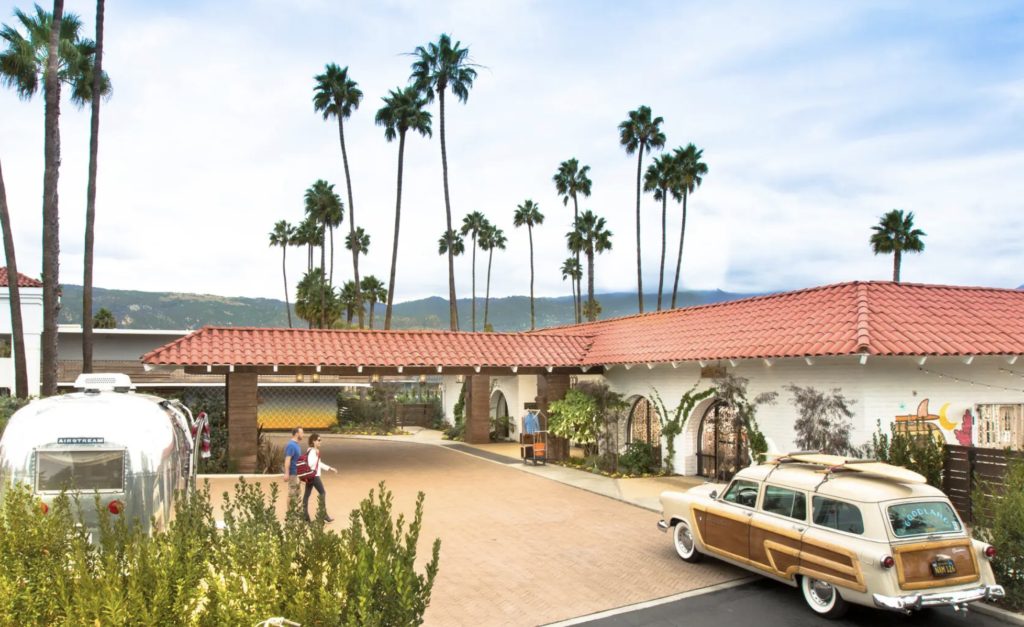
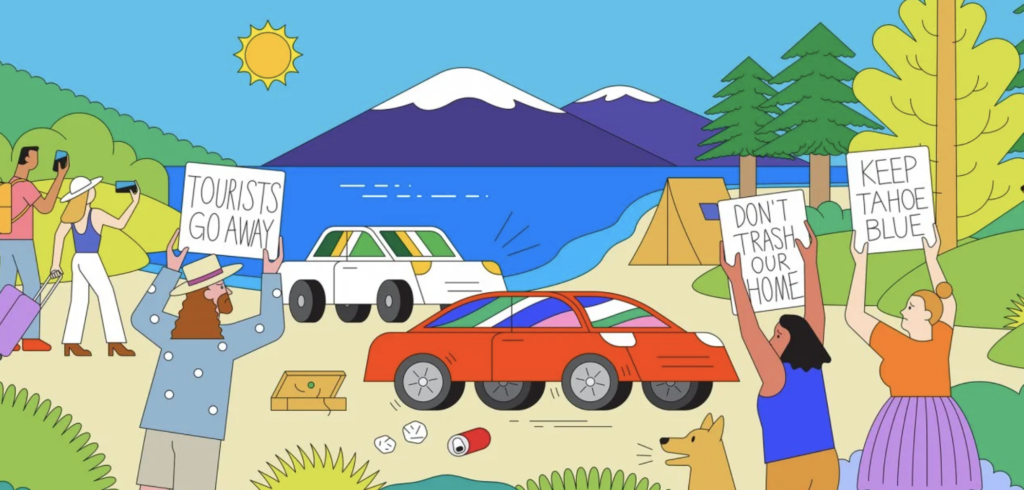
 (Photo: Tim Parsons)
(Photo: Tim Parsons)
 At a rally in Tahoe last August (Photo: Tim Parsons)
At a rally in Tahoe last August (Photo: Tim Parsons)